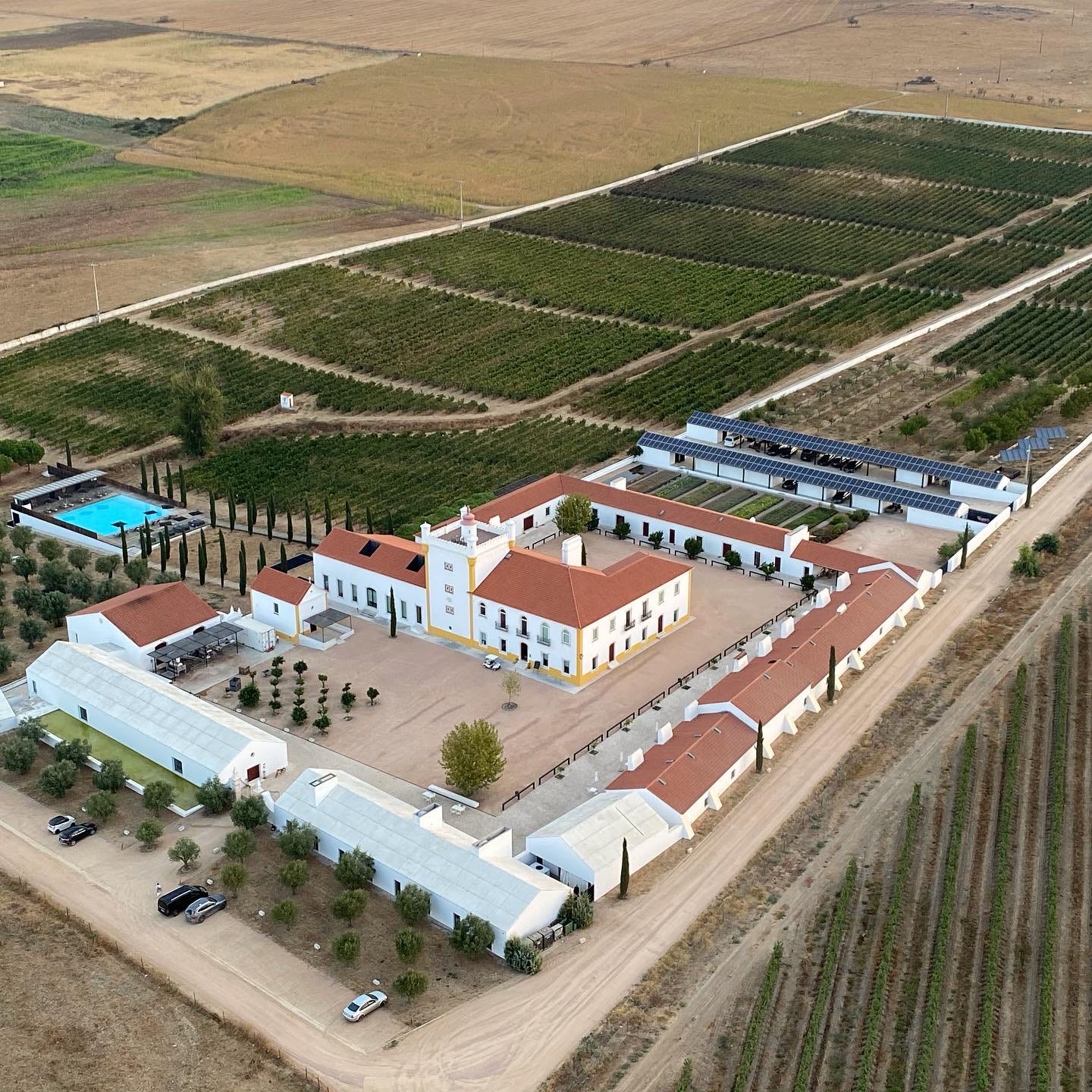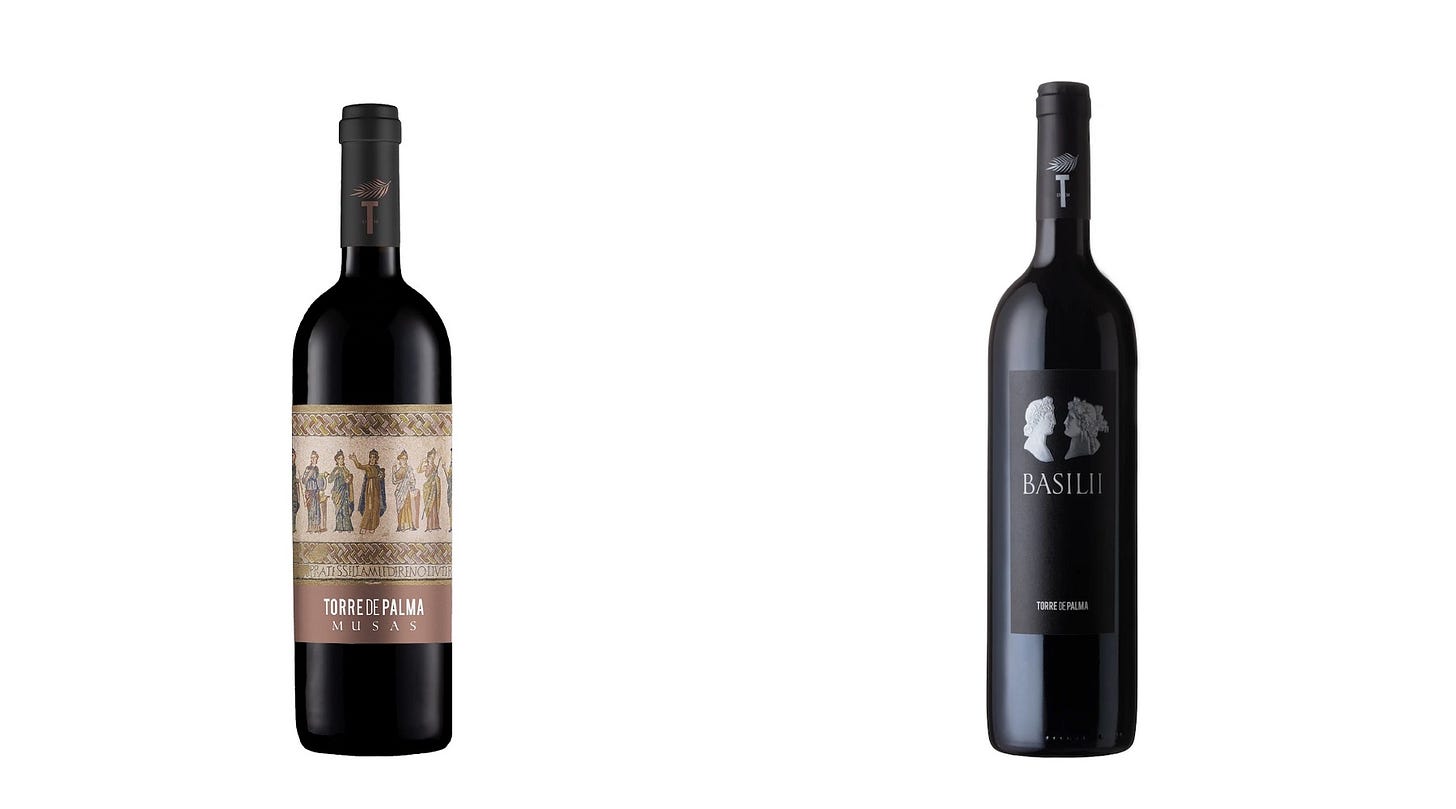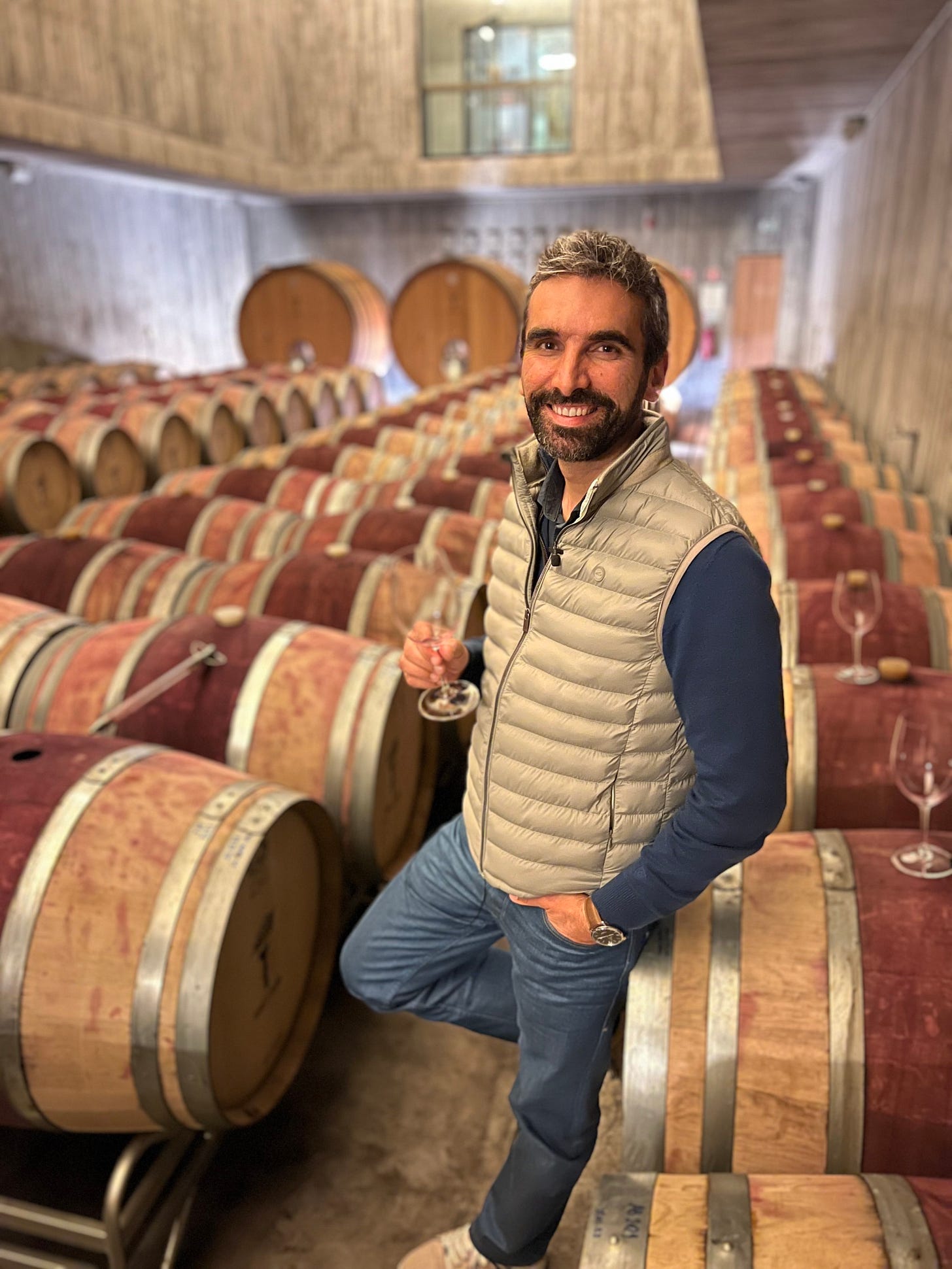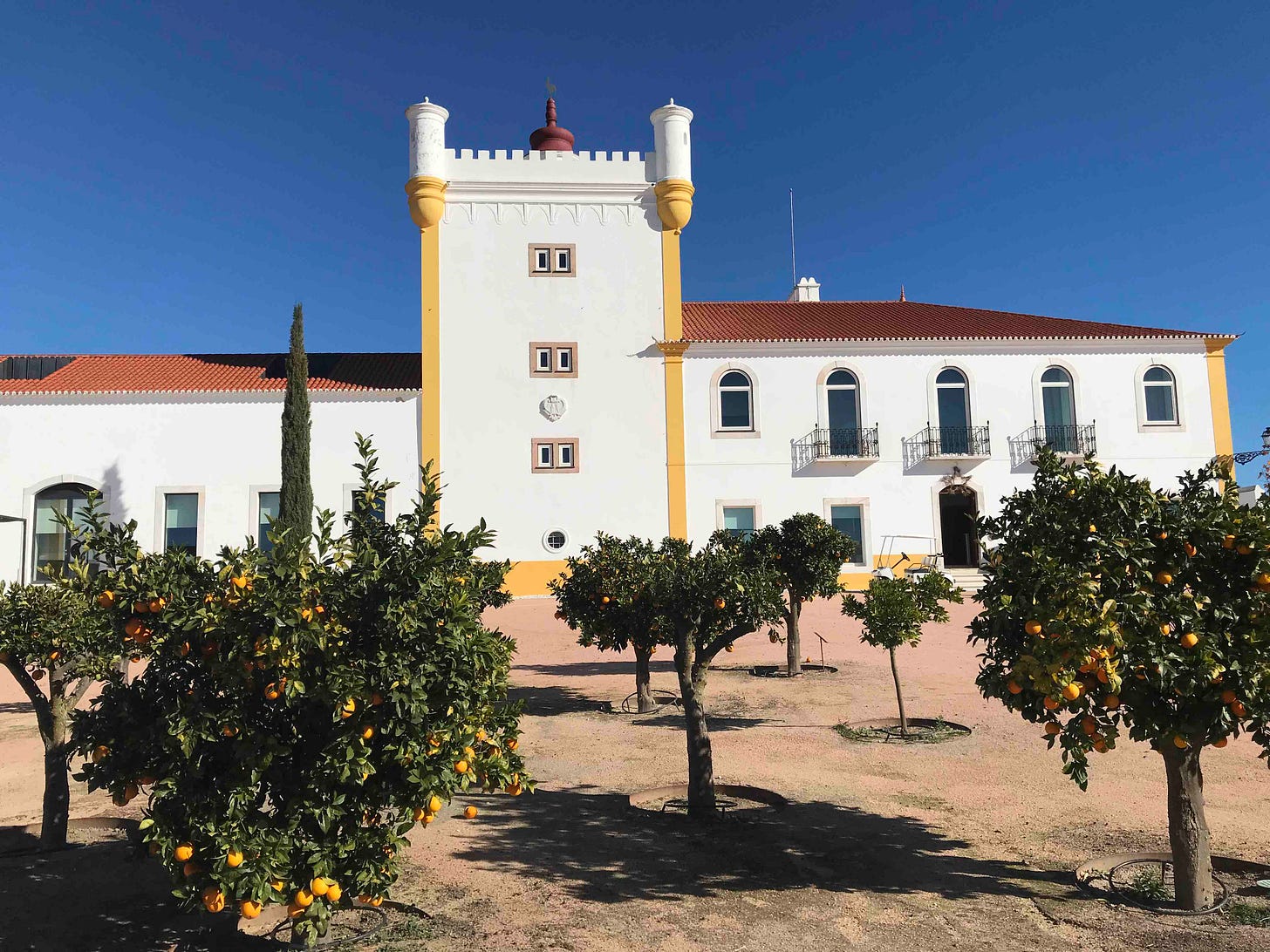Apple of the Ancients
Reviving the Romans at Torre de Palma luxury wine hotel
The Romans left a long legacy in bricks and mortar the length and breadth of Europe through their roads, bridges, aqueducts – and in my home town of Newcastle Hadrian’s massive wall.
But more than two thousand years on, their other great lingering legacy is wine.
Wine is not something the Romans invented, but it is something they embraced, developed with some ancient tech and made their own.
Just like when Apple launched the iPod and the iPhone – existing technology redesigned and mass produced...and which also changed the world.
When it comes to wine, one could call the Romans the Apple of the ancient civilisations.

The Tartessians are thought to have brought the first vines to Portugal in 2000BC, and historians credit the Phoenicians with the first winemaking from around 800BC.
But the Romans left behind some pretty impressive evidence of the lifestyle they built around the grape and their worship of Bacchus, the god of wine.
There are few bigger or better examples in Portugal than the Torre de Palma villa where the Basilii family lived for nearly five centuries drinking wine, breeding horses and relaxing in their spa baths.

Roman remains were first found on the Alentejo estate in Monforte in 1947 and archaeologists uncovered figurative mosaics so famous they now reside in a national museum in Lisbon.
One mosaic portrays five champion Lusitanian horses, first bred in this part of Portugal, while others represent Bacchus and the Muses – nine women who now feature on a reserve wine label produced at Torre de Palma today.
Literally built upon the legacy of the family who lived here between the first and the fifth centuries, the site is now a luxurious wine hotel surrounded by vines and dedicated to the same values.
“What the Romans did then is what we do today,” said Luísa Rebelo, Torre de Palma’s general manager, and daughter of the Portuguese couple who bought the rundown property in 2008 and set about restoring it.

“The Basiliis owned many hectares of land and had certain traditions like winemaking, olive oil making and breeding horses. And pieces of talhas [clay amphorae] were found where the Romans used to produce their wine.
“What we tried to do here is to recreate the lifestyle of the Romans, in the winemaking, in the gastronomy, also in the spa, the horse breeding and horse riding.
“So it's pretty much the great pleasures of life, to eat, to drink and to enjoy the nature,” Luísa Rebelo told us.

Today Torre de Palma not only has its own winery, but also its own God of Wine.
Duarte de Deus is the head winemaker who works with “seven hectares and seven different grape varieties” – all of them indigenous Portuguese grapes.
He says the philosophy of Torre de Palma is small batch, limited editions, of high quality wines.
At harvest time guests are invited to crush the grapes under foot in beautiful lagars made of the famous pink marble from nearby Estremoz.

“Deus means God, so I've said that I'm a god of wine,” joked the new generation Portuguese winemaker who believes wholeheartedly in Portugal’s native grapes.
He thinks people are now looking to explore wines and grapes they haven’t tried before.
The white grapes are Arinto, Antão Vaz and Alvarinho, while the reds are Aragonez, Touriga Nacional, Alicante Bouchet and Tinta Miúda – the latter an unusual variety which Duarte de Deus says was brought to Portugal 400 years ago.
“Tinta Miúda gives freshness to the red wines – it gives the salt and pepper to that special wine, you know, that special touch. It's really elegant.”
We may be wine beginners, but a smooth pepperiness is what Ana and I felt, tasting it straight from the barrel in the wonderfully echoing cathedral of a wine cellar designed by the Portuguese architect João Mendes Ribeiro.

A modern white concrete roof adorns the winery and fine-dining restaurant, and together with long side corridors and a south facing lake, they protect the cellar from the heat of the Alentejo summer where temperatures often exceed 40C.
The Roman archaeological site is a short stagger from the renovated farm-building rooms and has its own visitors’ centre, but is just part of this property’s long history.
Centuries of Islamic rule under the Moors came after Roman rule and the Visigoths, then Christian reconquests led to the Portuguese dynasties which paved the way to the expansive period of ocean-going discoveries.
Torre de Palma’s centrepiece tower on the main building dates back to 1338 when the Portuguese Crown took ownership of the estate for 500 years.
In private hands from 1863, its agricultural land provided work for the surrounding villages until the 1974 revolution when it came under collective ownership, fell into bankruptcy and then into ruin while its ownership was disputed for years in court.
And so the Rebelo Family stepped in, rebuilt the property and put Roman values back at the heart of the estate.
Now a Design Hotel, with interiors by Rosarinho Gabriel, the rooms are fabulously coloured and varied, the spa is airy and relaxed, and the meals at the Palma restaurant are beautifully crafted by chef Miguel Laffan.
His take on Alentejano cooking is a wonderful new world that’s best enjoyed with wine…or a touch of salt and pepper…as some might say.
Do check out Torre de Palma’s website with thanks to Luisa Rebelo, Duarte de Deus and everyone at the hotel. We’ll be back to cover the harvest time grape crushing in their pink marble lagars for the podcast which we hope to release later in the year
And congratulations to Chef Miguel Laffan and his team at Torre de Palma for winning the Best Restaurant prize at the Portuguese National Wine Tourism Gala this week






Thanks, Al. I believe our readers will truly enjoy your adventures and anecdotes!
Fabulous piece, Alistair! Although Portugal Living Magazine has a wine column (focusing on the wines of a particular region) in each issue, I'm enthralled by your content here. Equally important, I adore the title. Shall we share this with our readers as a feature in an upcoming issue? All attributions and links encouraging readers to subscribe will, of course, be given.